Luckily, as travel addiction becomes more widespread, so do the treatment options. The type of treatment depends on the severity of your infection, but all options address the underlying cause of the ailment – the need to see more, to learn more, and to experience more. It may be possible to subdue the symptoms of travel addiction by planning your next adventure, but when your travel immune system starts to build up a resistance to the same type of treatment, you need to change the dosage.
You need somewhere that offers breath-taking scenery, a strong national identity, culture you have not experienced before, a unique and interesting history, the opportunity for entertaining local interactions, and a thought-provoking and memorable experience.
There is a peaceful and spiritual oasis lying in the heart of the Eastern Himalayas that meets all of these requirements, and yet Bhutan remains one of the least visited countries in the world. Why?
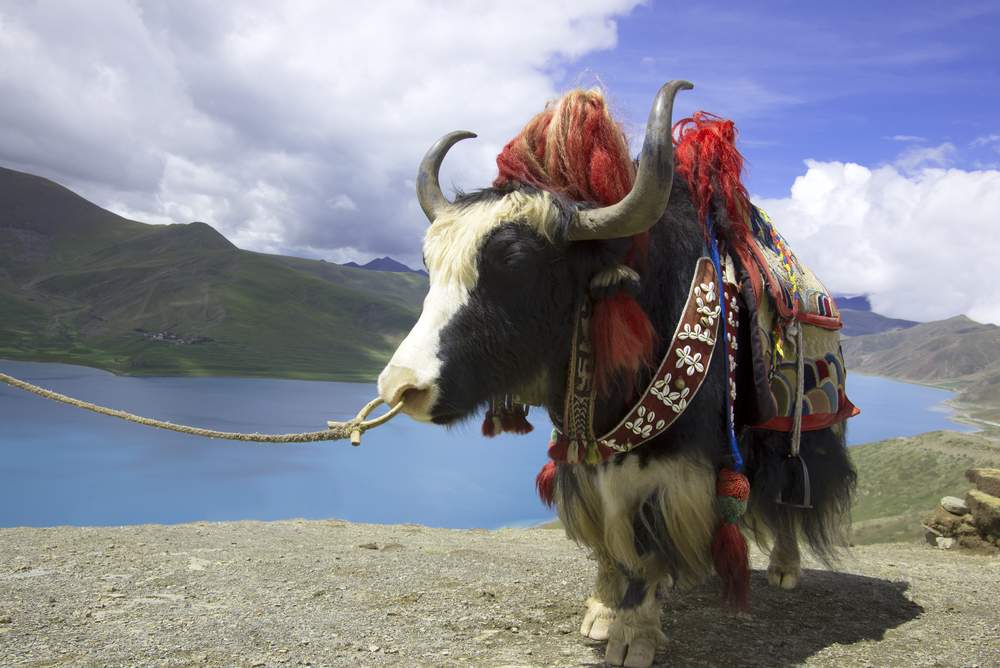
Limited land crossing options leave flying as the only option for most travelers. Druk Air has a monopoly on the flights and only operates from Bangkok, Kathmandu, or a handful of airports in India. As a result, flights are expensive and often booked up in advance. This often deters travelers who have a preference, or a budget, for overland travel.
All visitors to Bhutan need a visa, and this is only possible with a pre-paid tour booked with a local guide. There are a handful of international travel companies who partner with local groups, but only local guides may operate within the country itself. Independent travelers can organize a tailored and flexible itinerary with their local guide, but the daily cost is often considerably higher for individual travelers. This often deters travelers who have a fear of group travel with an organized itinerary but cannot afford the daily rate.
Bhutan is remote and expensive. Is it really worth it?
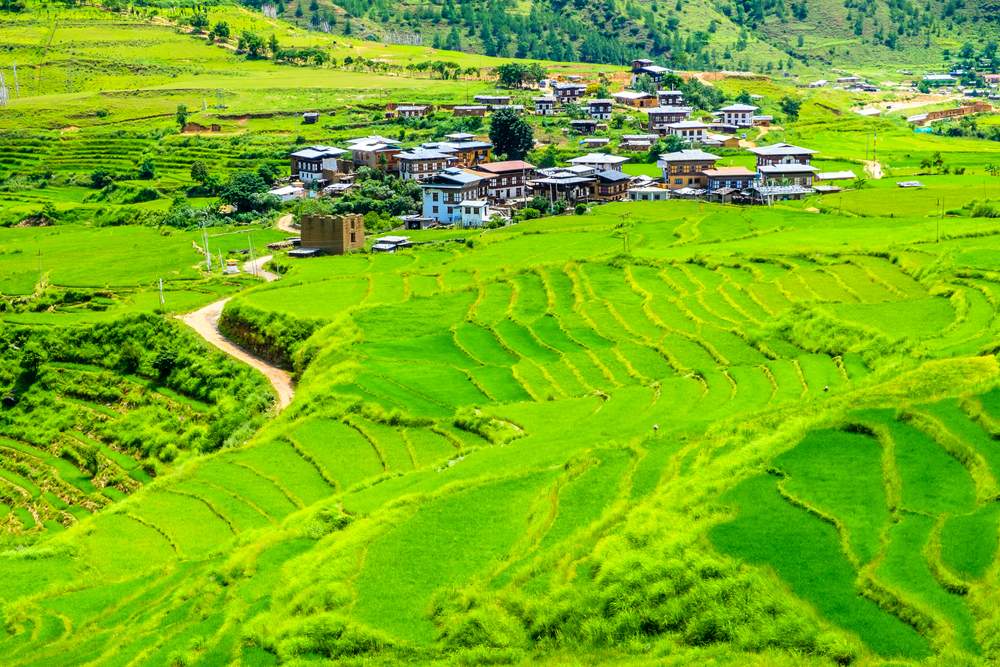
But if you are willing to forego these modern luxuries and Western influences, you will be rewarded with a thought-provoking and enlightening experience in a country that believes Gross National Happiness is more important that Gross Domestic Product.
While parts of the world are in turmoil, with blood being shed in countries fighting for democracy, you will be visiting a nation that peacefully introduced its first democratically elected government in 2008. Bhutan had been governed by a much loved monarchy since 1907, and not only was the change to democracy instigated by the Throne itself during a time of peace, stability, and development, but it was initially opposed by most people before being reluctantly accepted as necessary for the country’s future. The King remains the head of the Government and shares his power with the Spiritual Leader, ensuring the philosophy of secular and spiritual harmonization remains.
I suffer from travel addiction. I had become immune to my treatment and needed to increase the dosage. It sounded like Bhutan may be the answer, and there was only one way to find out.
As I began to prepare myself for my encounter with Bhutan, there were two pieces of information that immediately intrigued me: the self-imposed exile from the rest of the world, and the concept of Gross National Happiness.
Opening the Door
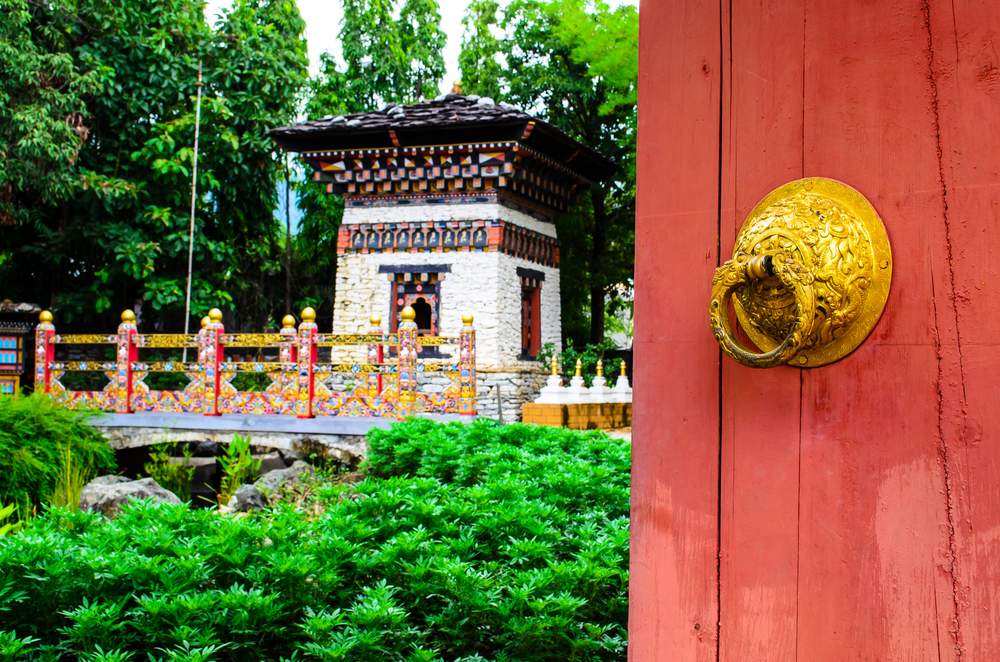
Although there are still no traffic lights in the country, development since 1961 has included the construction of roads, introduction of motor vehicles, and more recently, modern technology such as satellite television, mobile phones, and the internet, which have become available to the local population.
This rapid development has taken place over a short period of time, and the guiding principle behind development decisions has been the concept of Gross National Happiness.
Gross National Happiness (GNH)
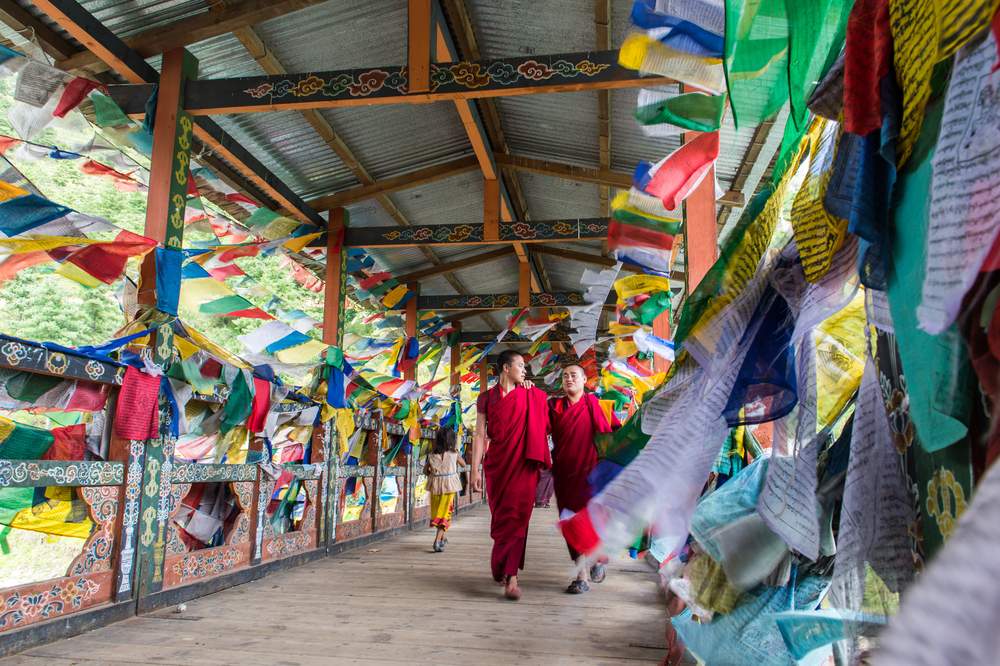
GNH is a philosophy that attempts to harmonize economic progress with the spiritual and emotional well-being of the people. The concept of GNH is that true development of human society takes place when material and spiritual advancement either compliment or reinforce each other. It focuses on ensuring that every stage of material development is assessed to ensure it will lead to happiness rather than just more development.
But how does this work in practice?
GNH has been the guiding principle behind development decisions. GNH emphasises that current development should not have an adverse impact on future generations or on other sentient beings that form part of Buddhist beliefs. As such, development decisions are made through strict adherence to four pillars of GNH:
- Equitable and Sustainable Socio –Economic Development: The attempt to distribute the benefits of development evenly across all sections of society, despite the country’s difficult terrain and dispersed communities.
- Preservation and Promotion of Culture: In particular strengthening the institutions of family and communities and preserving local, regional, and national festivals.
- Conservation of Environment: The belief that humans and nature are inseparable from each other has led to a significant portion of the country’s 72% forest cover being declared protected.
- Good Governance: A democratically elected government that is free from corruption.
Armed with these two key pieces of information before I arrived, I wasn’t sure what to expect. What would our accommodation be like? Would there be hot water? Would we spend most of our time driving across pot-holed roads? GNH sounded great in theory, but how does it translate to the everyday lives of the locals? Would I recognize the practical adoption of this theory in the country when I arrived?
My questions didn’t stop there.
What to expect
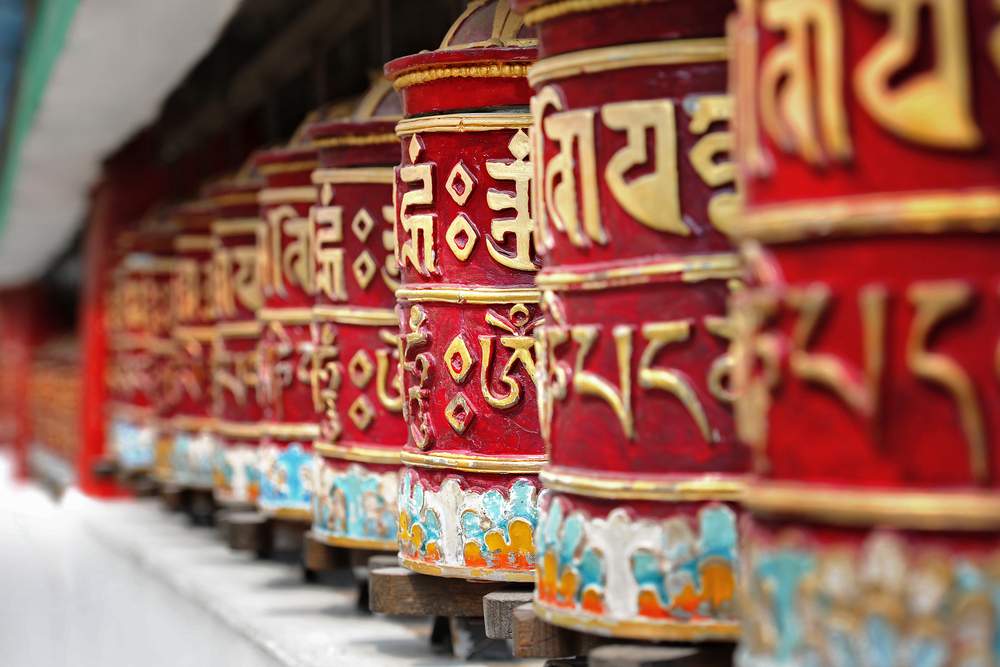
Had my amazing recent travel adventures ruined my future ones?
Within the last half hour of the surprisingly comfortable Druk Air flight, I looked up from the inflight magazine article on Bhutan facts that I had been engrossed in and gazed outside the window. The Himalayan Mountains we were flying through were simply breathtaking and felt to be within touching distance. The apprehension I’d been feeling evaporated, and I was completely “in the moment,” a place I would remain for the next seven days. It was like someone had waved a magic wand above my head and cast a hypnotic spell where I could think of nothing but my new surroundings.
As I waited in the immigration queue, I experienced an incredible feeling that was a cocktail of excitement, peace, calm, and anticipation as I recognized I had just landed in a very unique country. I watched the immigration officers calmly stamp each passport attractively attired in their National Dress, and I looked around at the large framed photographs of Kings from the much loved Wangchuck Royal Family. There were many references to Gross National Happiness and a warning sign reminding everyone that the sale of tobacco and smoking is illegal.
I was greeted outside the airport by my local guide and was introduced to seven other travelers who would be my companions for the next week. The concern I had about traveling in a group immediately evaporated as I realized a country like Bhutan attracts like-minded and solo travelers who want to travel independently within their group tour.
A week in Bhutan

Day 1
In addition to being the closest town to the number one attraction of Bhutan, the Tiger’s Nest Monastery, Paro is home to an interesting museum, an archery field and a number of religious structures. Rinpung Dzong is one such structure, an impressive 17th century monastery that was once used as a fortress and sits on a hill providing stunning panoramic views of Paro Valley.
The quaint size of Paro allowed us to visit all of these attractions on our first afternoon, leaving Tiger’s Nest Monastery for our return visit at the end of the week. Arriving on a Sunday also provided us with the unique opportunity to join the locals at the archery field and partake in some friendly banter as we enjoyed our first encounter with Bhutan’s national sport.
Day 2
Paro is the starting point of the “best road in Bhutan” and would lead us through some stunning scenery towards Thimphu, the “Capital City With No Traffic Lights.” Before we left Paro; however, we made an unplanned stop at a house that was being built from mud and brick by the owner’s neighbours and extended family. This impromptu, educational, and entertaining detour was the first of many that day that reminded me I was not on a typical “group tour.”
Thimphu is a beautiful town with a relaxed and sleepy feel to it. It has two main shopping streets, one of which closes on Tuesdays and the other on Wednesdays, and it contains a bank, post office, and souvenir shops, providing the best opportunity to change money, send postcards, or do some shopping. It also has a number of attractions that provide a further insight into the lifestyle and culture of Bhutan, and we enjoyed visits to a paper making factory, vocational learning center, and folk heritage museum.
Day 3
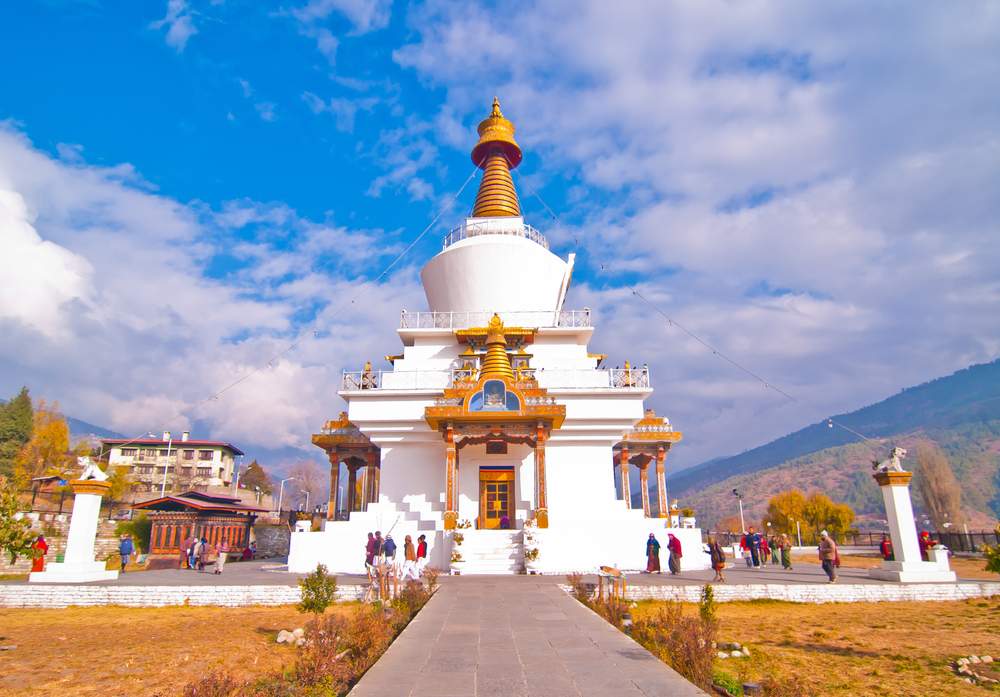
On our way to the stunning Dochu La Pass, we stopped by the local zoo to see the Takin, Bhutan’s national animal, and enjoyed the changing scenery as rhododendrons added a splash of color to the forest colored hills.
After stopping for lunch at a restaurant that boasts some of the most spectacular views in the world, the descent into Punakha Valley began, where phallic symbols appear on most of the houses in the region. A hike to the Temple of the Divine Mad Man provided the opportunity to get some exercise, meet some of the monks, and enjoy conversing with friendly locals in the valleys and villages. Having sufficient time to enjoy our surroundings with a flexible itinerary helped create the illusion that I was traveling independently with a group of friends rather than an organized group tour.
Day 4
A visit to Punakha would not be complete without seeing one of the highlights of Bhutan, the Punakha Dzong, and we made our way there after enjoying a picnic lunch by the nearby river. The Dzong is referred to as the “Palace of Happiness” by the locals, and many monks relocate there in the winter months to take advantage of the warmer climate.
A day already packed with highlights continued with time to wander through Punakha town and a final stop at a beautiful and peaceful nunnery, seemingly engulfed by the surrounding mountains.
Day 5
Although I had been pleasantly surprised with the comfortable hotel rooms we had stayed in so far, we were expecting more basic accommodation in Gangte and a significant drop in temperature. As such it felt like quite the treat to drive up to a beautiful hotel with stunning views of the valley and be shown to comfortable and large rooms with a wood fire already crackling.
Day 6
Day 7
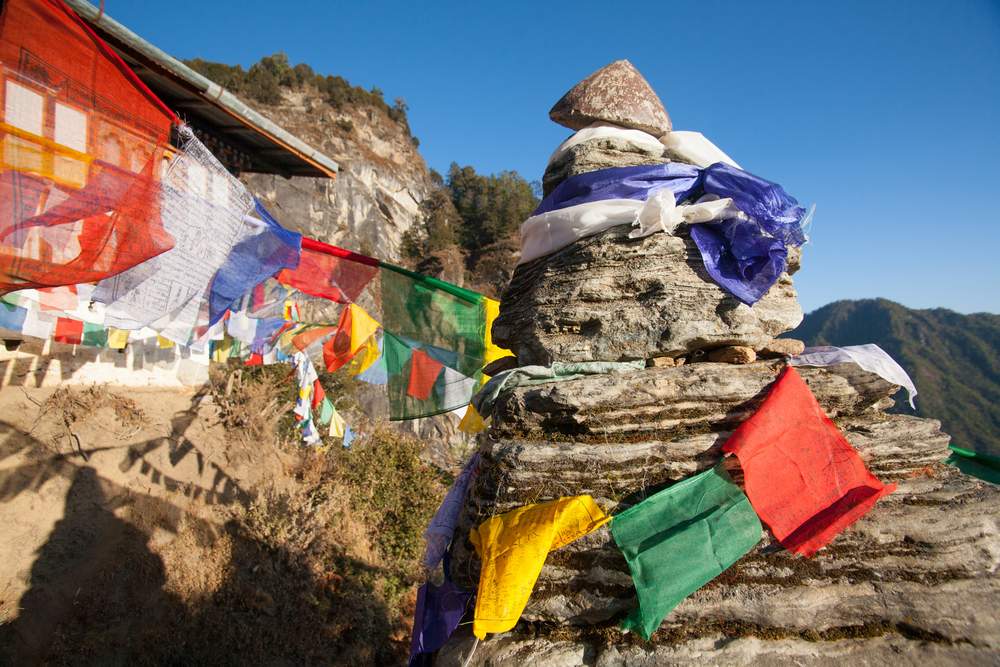
Don’t Leave Bhutan Without:
- Hiking to Tiger’s Nest Monastery, a sacred pilgrimage site that clings to a 900 meter cliff. This steep trek is best done at the end of your trip when you’ve had time to acclimatize. A cafeteria provides a well–timed break for those not in peak condition before attacking the final part of the trek, which culminates in one of the most spectacular sights you will see in Bhutan. The dirt track transitions to cobbled steps, and the pot at the end of the rainbow is a monastery that rewards you with an incredibly spiritual and peaceful atmosphere with an intriguing history.
- Taking your time to explore the many religious structures in the country where your pre-conception of monks will be both enhanced and changed. If you arrive during one of their prayer or education sessions, you may be invited to stay and be captivated by their hypnotic and disciplined chanting. You may also notice naughty novice monks struggling to maintain concentration, monks on mobile phones, those performing daily chores, and some may be happy to practice their English with you.
- Seeking out the location of the Sunday afternoon regional archery competition. Locals will be more than happy to explain the national sport to you and may even teach you some of the football-like chants being sung to the opposing team.
- Taking a casual stroll around Thimphu, pausing on the main bridge to enjoy your picturesque surroundings, and returning the shy smile from passers-by with the local greeting “Kuzo zangpo la.” If you are craving some Western food, search for one of the two bakeries that sell scrumptious cupcakes and enjoy it as you wander past the National Stadium. If you are lucky, you may be able join spectators of a local football game being played outside the stadium where Bhutan’s national team once defeated Montserrat 4-0 in a game between the world’s two lowest ranked teams. This game was played on the same day Brazil and Germany competed in the 2002 World Cup Final.
- Enjoying a conversation with friendly locals in the Punakha Valley. Bhutanese people may appear shy at first, but a friendly smile and greeting will almost always instigate an entertaining conversation. Children giggle at the sight of themselves on your camera viewfinder, the older generation with little English will laugh at your attempt to learn local words, and as you describe the concrete jungle you live in back home, you will see a wistful look in a young girl’s eyes who dreams of visiting a country so different to her own.
- Taking time to slow down. Bhutan’s recent but late development in the country provides the opportunity to escape the often-overwhelming modern technology that plagues our daily lives while enjoying basic but comfortable amenities.
There are so many things wrong with the world. There are so many countries in turmoil. There is a growing power-struggle between the superpowers of the east and west. There are countries suffering violence and bloodshed to achieve a democratic, corruption-free, and fair existence.
And then there is this little country called Bhutan, which many people haven’t even heard of, that seems to have gotten so much right. It has a much loved Royal Family, a newly elected and respected government, and experiences a relatively peaceful existence.
A monarchy that spent the first half of the last century maintaining its culture and national identity has recently begun to open its doors to the outside world, which inevitably raises some questions. Does Bhutan have something the rest of us can learn and benefit from? Will it benefit from the positive aspects of modern technology and development? Or has it created a gateway through which the negative aspects of the outside world will creep through to challenge the peace, culture, and national identity that this country is so proud of.
Only time will tell. Bhutan is proud of the past but embraces the future.
Check out the Bhutan Indie Travel Guide and use Indie to add Bhutan to your round the world trip.
Photo credits: Delpixel, Hung Chung Chih, maodoltee 2014, NorrabhuditI, LIUSHENGFILM, theskaman306, MC_Noppadol, Rbcoolz
